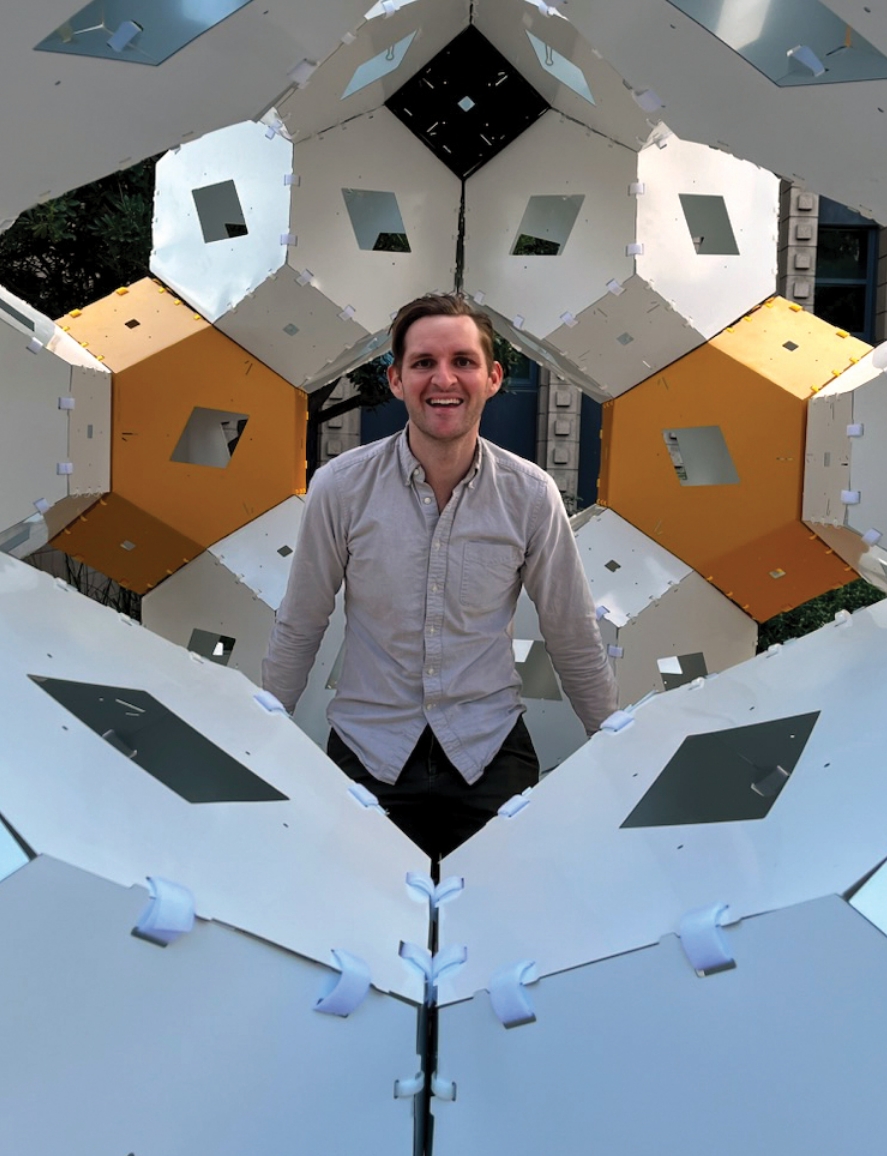Harvey Mudd community members gathered this spring to demonstrate that “truncated octahedra work as rhombic dodecahedra” by constructing mathematical art that’s also a vibrant display of unity and community spirit.
At 9 feet tall and 13 feet wide, the yellow, black and white aluminum structure—TOWARD for short—demonstrates a relationship between truncated octahedra and rhombic dodecahedra, two examples of space-filling polyhedra. Each dodecahedron is made up of two connected octahedrons, all of which participating alumni, students, faculty and staff had to fold, connect and assemble.
Peter Kagey, visiting assistant professor of mathematics, said the inspiration for the project came from spending time in HMC’s makerspace. “The makerspace gave me an excuse to go and make all sorts of new kinds of mathematical objects, and, through that, I started getting connected to people online who were creating similar types of illustrations.”
“A lot of times in math, we really don’t get the opportunity to get hands-on with the topics we talk about. I’m excited to show friends and family who visit a physical project and structure I got to work on.” LYDIA STONE ’25, MATHEMATICS MAJOR
Kagey met Glen Whitney, founder of Studio Infinity, a group that makes large-scale math illustrations and demonstrations, and they decided to bring a project to Harvey Mudd. Math alum Nick Rauh ’06, who had worked with Whitney at the National Museum of Mathematics, was thrilled to help.
“It’s been wild to be back on campus constructing this object,” Rauh said. “We’re all about getting people to be enthusiastic about math, and obviously most of the people here are already enthusiastic about math, but we hope that some of the other folks who join will share that excitement as well.”
Lydia Stone ’25 was one of the first Mudders onsite to begin building the octahedra. She saw it as a rare opportunity for her and other Mudd mathematics majors. “A lot of times in math, we really don’t get the opportunity to get hands-on with the topics we talk about,” she said. “I’m excited to show friends and family who visit a physical project and structure I got to work on.”
Funded by the Seattle Universal Math Museum, the structure was assembled and nestled in an octagonal area between the Jacobs Science Center and Kingston Hall, where it will be situated for the remainder of the term.
